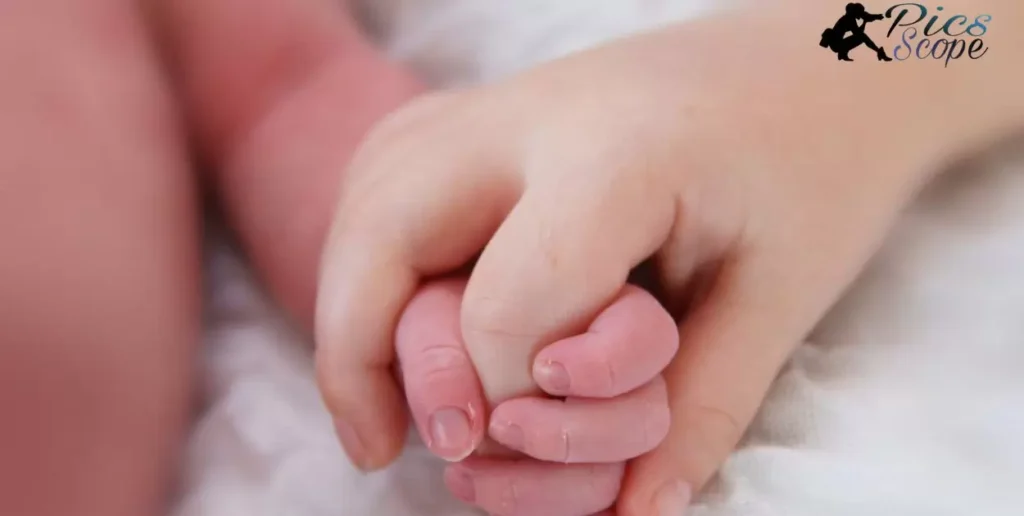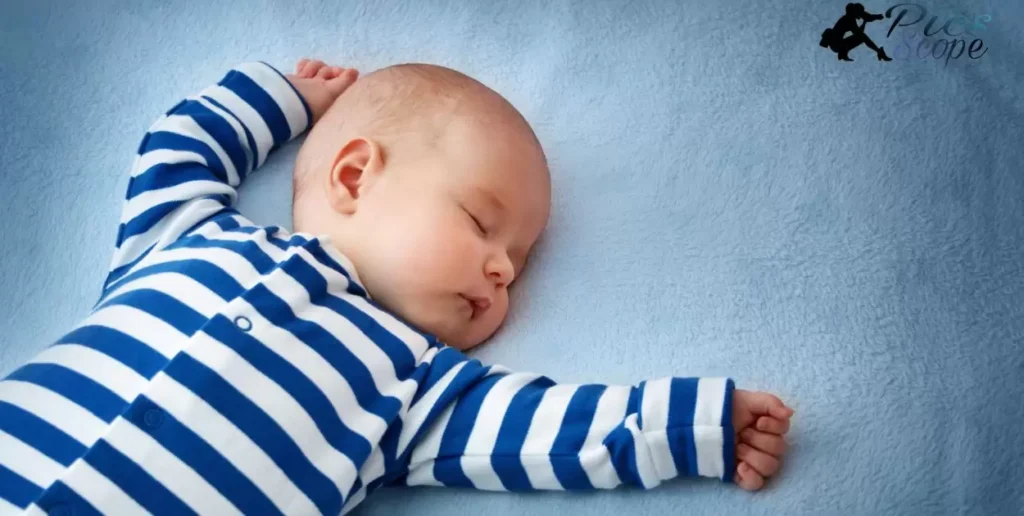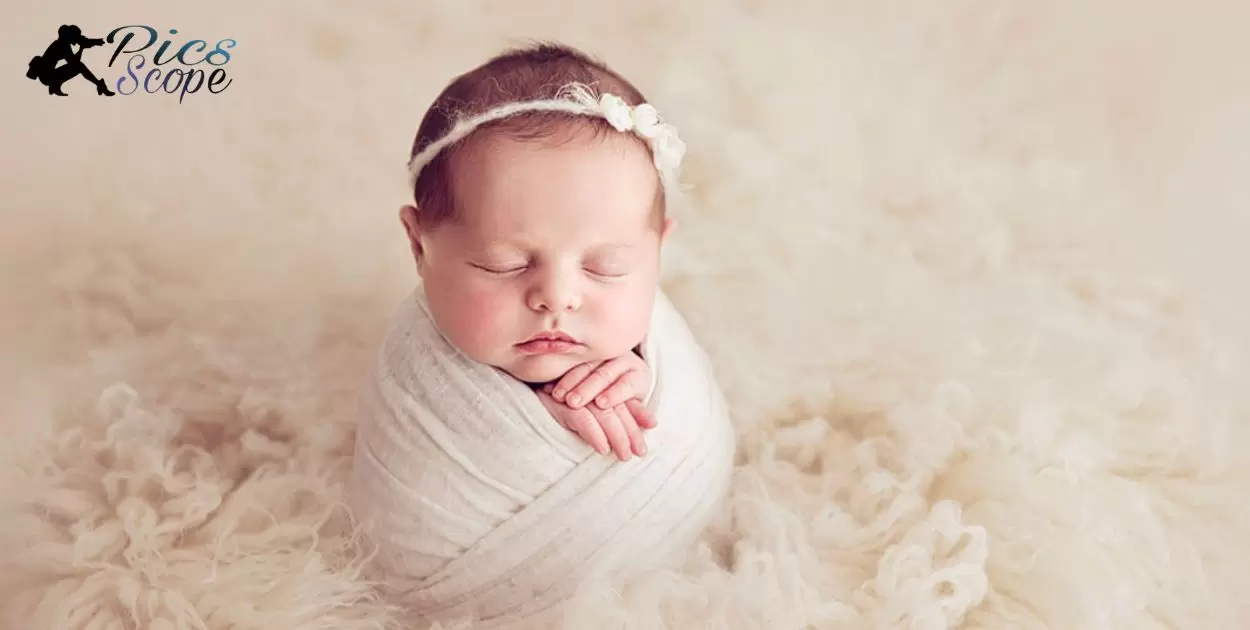Capturing the charm of a newborn for photography requires skill. A newborn for photography refers to an infant within the first 14 days. This brief window allows for capturing the innocence and fragility of early infancy.
Learning how to wrap a newborn for photography is crucial. Gently swaddling the baby in soft fabrics creates a cozy and secure environment. Mastering this technique is essential for showcasing the purity of a newborn.
Tips for wrapping a newborn involve creating a snug and visually appealing wrap. Start with a clean and safe environment, using soft fabrics. Pay attention to the baby’s comfort, experimenting with different wrapping styles for stunning photographs.
Understanding Newborn Photography
In newborn photography, we capture the charm of babies in their earliest days. These precious moments are frozen within the first 14 days of life, showcasing the innocence and fragility of infancy. This unique window allows photographers to create timeless images that highlight the natural beauty of newborns.
To grasp newborn photography, it’s crucial to learn how to wrap a baby effectively. Gentle swaddling in soft fabrics creates a secure and cozy environment for the little ones. Mastering these wrapping techniques becomes essential to showcase the purity of newborns and create visually stunning photographs.
Why is the first 14 days crucial for capturing infant images?
The first 14 days after a baby is born are crucial for capturing adorable infant images. During this time, babies tend to sleep more, making them easier to photograph. Their flexibility and ability to curl into sweet poses naturally diminish after this short window, emphasizing the importance of scheduling newborn photography sessions early on.
Newborns undergo rapid changes, and the first two weeks mark a period of fleeting innocence and delicate features. Photographers seize this early opportunity to capture the pure essence of a newborn before they become more alert and less cooperative for posed shots. Scheduling within the first 14 days ensures the best chance to create timeless and heartwarming images that families can cherish for years to come.
How does newborn photography freeze fleeting moments?
Newborn photography freezes fleeting moments by capturing the adorable and delicate features of infants within their first 14 days. Skilled photographers use this brief window to document the innocence and charm that evolve remarkably quickly.
They employ techniques like gentle swaddling to create cozy, secure environments, ensuring the resulting images encapsulate the purity of early infancy. These snapshots become timeless treasures, preserving the precious and fleeting moments of a newborn’s early days.
Through the art of newborn photography, the photographer actively seizes the opportunity to capture the essence of a moment that will never be the same again. By understanding the significance of the first 14 days, photographers can skillfully frame and compose shots that highlight the unique and endearing qualities of each infant.
Mastering the Art of Newborn Photography Wrapping

In newborn photography, mastering the art of wrapping is essential for creating beautiful images. Begin by learning how to wrap a newborn effectively, ensuring the baby feels cozy and secure during the photo session. Use soft fabrics and experiment with different wrapping techniques to highlight the pure and innocent features of the infant.
Understanding the importance of gentle swaddling helps photographers showcase the newborn’s purity. Mastering wrapping techniques is a skill that enhances the overall aesthetic of the photographs, allowing photographers to capture the charm of these precious moments with ease and creativity.
How to wrap a newborn for photography effectively?
- Choose soft, breathable fabrics.
- Ensure the wrap is snug but not too tight.
- Experiment with various wrapping styles.
- Prioritize the baby’s comfort and safety.
Photographers aiming to capture the charm of newborns must master effective wrapping techniques. Selecting soft and breathable fabrics, achieving a snug yet not overly tight wrap, and experimenting with different styles are key components. Prioritizing the baby’s comfort ensures a successful and visually appealing newborn photography session.
What role does gentle swaddling play in creating a cozy environment?
Gentle swaddling plays a crucial role in making a cozy and secure environment for newborns during photography sessions. It involves wrapping the baby in soft and comfortable fabrics, ensuring they feel snug and protected. This technique helps in keeping the baby calm and relaxed, allowing photographers to capture adorable poses with ease.
Why is mastering wrapping techniques essential for showcasing purity?
Mastering wrapping techniques is essential for showcasing the purity of newborns in photography. By skillfully swaddling infants in soft fabrics, photographers create a secure and comfortable setting, allowing the innocence and vulnerability of the newborn to shine through in each captured moment.
| Wrapping Techniques | Importance |
| Gentle Swaddling | Ensures comfort and security for the baby, contributing to a calm and cooperative photoshoot. |
| Choice of Fabrics | Soft and breathable materials enhance the aesthetic while providing a cozy environment for the newborn. |
| Varied Wrapping Styles | Experimenting with different styles allows photographers to highlight the unique features of each baby, adding diversity to the collection of images. |
The Importance of Wrapping Techniques in Photography
Effective wrapping techniques in photography are crucial for creating visually appealing images. When photographers master the art of wrapping, they enhance the overall quality of their work.
Wrapping contributes significantly to the aesthetic appeal of newborn photographs, ensuring the subject looks snug and comfortable. This skill allows photographers to capture the purity and charm of a newborn in a way that is visually pleasing.
Choosing the right fabrics and styles for wrapping is key to success in photography. Soft and breathable materials work best, providing a cozy and secure environment for the newborn. By understanding the importance of wrapping techniques, photographers can elevate the newborn photography experience and produce images that stand out for their visual appeal and the comfort of the subject.
How does wrapping contribute to the visual appeal of newborn photographs?
In newborn photography, wrapping plays a crucial role in making images visually appealing. It adds a layer of coziness and security to the baby, making them more comfortable during the session. The snug wrap also accentuates the baby’s features, highlighting their adorable expressions and creating a visually pleasing composition.
Photographers use various fabrics and styles to wrap newborns, experimenting to find what suits each baby best. This hands-on approach not only enhances the aesthetics of the photographs but also ensures that the baby remains content and relaxed throughout the photography session.
What fabrics and styles work best for a snug and secure wrap?
- Soft, breathable fabrics such as muslin or jersey cotton are ideal for newborn wraps.
- Stretchy fabrics allow for a secure and snug wrap, adapting to the baby’s movements.
- Consider using wraps with some elasticity for a comfortable yet secure fit.
- Styles like the classic swaddle or the cross-body wrap are popular choices for achieving a snug wrap.
- Experiment with different wrapping techniques to find what works best for each individual newborn.
- Avoid rough or irritating fabrics to ensure the baby’s comfort during the photography session.
- Prioritize wraps that are easy to adjust, allowing for a custom fit tailored to the baby’s size and shape.
Why is the comfort of the newborn crucial during the wrapping process?
Ensuring the comfort of the newborn is vital when wrapping them for photography. A snug and gentle wrap helps create a secure and cozy environment, allowing the baby to remain calm during the session. When the baby feels comfortable, they are more likely to cooperate, resulting in better photographs that capture their natural serenity.
Photographers play a key role in maintaining the newborn’s comfort by using soft and breathable fabrics for wrapping. Paying attention to the baby’s cues and adjusting the wrap accordingly ensures a positive experience, contributing to a successful and enjoyable newborn photography session.
Practical Tips for Wrapping Newborns in Photography Sessions
In newborn photography sessions, creating a clean and safe environment is crucial. Place soft and breathable fabrics within reach for efficient and comfortable swaddling. Experiment with different wrapping styles to discover what works best for showcasing the baby’s natural charm.
To ensure the newborn’s comfort, avoid tight wraps and focus on a snug yet gentle technique. Pay attention to the baby’s cues and reactions during the session. These practical tips not only enhance the visual appeal of the photographs but also contribute to a positive and enjoyable experience for both the photographer and the adorable subject.
How to create a clean and safe environment for newborn photography?
- Clear the shooting area of any potential hazards or clutter.
- Use soft and sanitized blankets or backdrops for the baby to lie on.
- Ensure proper room temperature for the newborn’s comfort.
- Have wipes or a gentle cleanser on hand for quick cleanups.
- Choose natural light sources to illuminate the photography space.
- Keep the photography equipment organized and out of the baby’s reach.
- Communicate with parents about any specific concerns or preferences for the session.
- Regularly sanitize hands before handling the newborn and photography props.
What are the soft and breathable fabrics recommended for swaddling?
To ensure a comfortable and safe experience for newborns during photography sessions, it’s essential to choose soft and breathable fabrics for swaddling. Opt for materials like lightweight cotton or jersey knit, as they allow proper airflow and prevent overheating. These fabrics gently cradle the baby, creating a cozy environment without causing discomfort.
Avoiding heavy or synthetic fabrics is key, as they may lead to excessive warmth and irritate the baby’s sensitive skin. By selecting soft and breathable materials, photographers can enhance the overall well-being of the newborn, making the swaddling process a pleasant and enjoyable part of the photography session.
Why is experimenting with different wrapping styles beneficial for photographers?
Experimenting with various wrapping styles in newborn photography is beneficial for photographers as it adds versatility and creativity to their work. By trying different techniques, photographers can discover unique ways to highlight the baby’s features and create visually stunning images. This not only enhances the artistic appeal of the photographs but also allows photographers to tailor their approach to suit the individual characteristics of each newborn.
| Wrapping Style | Description |
| Classic Swaddle | Involves snugly wrapping the baby with a blanket. |
| Cocoon Wrap | Creates a secure and cozy environment for the baby. |
| Crossed Swaddle | Involves crossing fabric to secure the baby’s arms. |
| Knot Tie Wrap | Features a knot for a unique and charming look. |
Exploring these different wrapping styles provides photographers with a toolkit to express their creativity, ensuring a diverse and captivating collection of newborn photographs.
Elevating the Newborn Photography Experience Through Wrapping
In newborn photography, wrapping techniques play a key role in enhancing the overall experience. Photographers can elevate their craft by mastering the art of wrapping newborns. Experimenting with different styles and fabrics not only adds visual appeal but also ensures a positive and comfortable session for both the photographer and the precious subject.
Creating a cozy and secure wrap is essential for showcasing the purity of a newborn. By understanding how to wrap a newborn effectively, photographers can freeze fleeting moments in time, capturing the innocence and fragility of early infancy.
How can wrapping techniques enhance the overall aesthetic of photographs?
Visual Appeal: Wrapping techniques add an artistic and visually pleasing dimension to newborn photographs.
Cozy Atmosphere: Creating a snug wrap contributes to a sense of comfort and security, reflecting in the baby’s relaxed demeanor.
Highlighting Features: Wrapping emphasizes the adorable features of a newborn, drawing attention to tiny hands, feet, and facial expressions.
Uniformity: Well-executed wrapping provides a clean and uniform look, eliminating distractions and focusing on the baby’s essence.
Versatility: Experimenting with different wrapping styles allows photographers to adapt to various themes and settings, enhancing the versatility of newborn photo sessions.
What role does a comfortable wrap play in a positive photography session?
A comfortable wrap is crucial for a positive photography session with a newborn. It ensures the baby feels secure and content, allowing for smoother transitions between poses. Additionally, a comfortable wrap contributes to a more relaxed atmosphere.
Promoting better cooperation from the newborn, resulting in adorable and natural-looking photographs. Wrapping not only enhances the visual appeal but also creates a pleasant experience for both the photographer and the precious subject.
Why do varied wrapping styles contribute to a unique and visually stunning outcome?
In newborn photography, different wrapping styles add charm and uniqueness to each photo. The way you wrap a newborn impacts the visual appeal of the image, highlighting their adorable features. Experimenting with various wrapping techniques allows photographers to create visually stunning outcomes.
Capturing the essence of the baby’s innocence and creating memorable moments in each photograph. By incorporating varied wrapping styles, photographers can customize the look and feel of each session. The versatility in wrapping adds a creative touch, making each image distinct and visually captivating.
This hands-on approach to wrapping not only enhances the aesthetic but also allows photographers to showcase their individual style, resulting in a collection of newborn photographs that stand out with charm and creativity.
How do you hold a newborn for a photoshoot?

When holding a newborn for a photoshoot, cradle the baby gently in your arms. Support the baby’s head and neck with one hand and their bottom with the other. Ensure their body is secure and comfortably positioned, allowing for natural and relaxed poses.
Keep the baby close to your body to create a sense of warmth and security. Use soft and natural light for the photoshoot, avoiding harsh flashes. This simple and caring approach helps capture adorable moments while ensuring the newborn feels safe and at ease during the session.
How do you position a newborn for photography?
Positioning a newborn for photography is a crucial step in capturing adorable and timeless images. Start by placing the baby in a cozy, well-lit space, preferably by a window for natural light. Gently support the baby’s head and use soft blankets or props to create a comfortable and secure environment.
Experiment with different poses, such as the curled-up fetal position or placing the baby on their tummy with head support. Keep the session brief and ensure the newborn is content throughout, allowing for a smooth and enjoyable photography experience.
How long should a newborn wrap be for photography?

To get the perfect newborn wrap for photography, consider a length of fabric that is around 1.5 to 2 yards long. This allows for flexibility in creating snug wraps without excess material. Keep in mind that the goal is to showcase the baby comfortably and securely, so a manageable length ensures ease of handling during the photography session.
Shorter wraps, around 1.5 yards, work well for creating compact and neat swaddles, while longer wraps, around 2 yards, provide versatility for more intricate wrapping styles. By choosing the right length, you can confidently wrap newborns for photography, capturing adorable moments while keeping the process simple and effective.
FAQ’s
How To Wrap A Newborn For Photography Without?
Use soft and breathable fabrics, wrapping securely but not too tight.
How To Wrap A Baby On Your Chest?
Ensure a secure wrap by crossing the fabric over the baby’s back and under their bottom.
How To Wrap A Newborn For Photography DIY?
Create adorable wraps using soft, DIY-friendly fabrics like muslin or jersey knit.
How To Wrap A 2-Month-Old Baby For Photoshoot?
Gently swaddle with a comfortable fabric, adjusting for the baby’s size and preferences.
Conclusion
Mastering the art of how to wrap a newborn for photography is a valuable skill for any photographer venturing into the world of capturing precious infant moments. The careful selection of fabrics and the consideration of the baby’s comfort play a pivotal role in creating visually stunning photographs.
By understanding the techniques outlined in this guide, photographers can enhance the overall experience of newborn photography sessions, ensuring the safety, comfort, and visual appeal of the wrapped newborns.
In the realm of newborn photography, the ability to skillfully wrap infants is more than an aesthetic choice; it’s a means of showcasing the delicate beauty of these tiny subjects. The techniques discussed empower photographers to create a cozy and secure environment.
Allowing them to freeze fleeting moments in time while preserving the innocence and fragility of early infancy. With a focus on the artful wrapping of newborns, photographers can elevate their craft and deliver heartwarming images that families will cherish for a lifetime.







